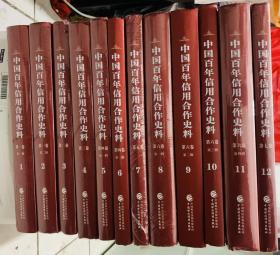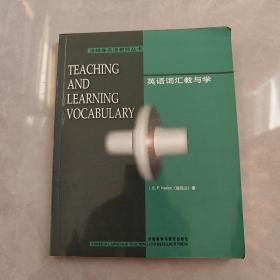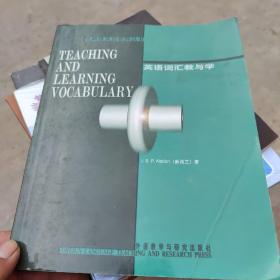
英语词汇教与学
¥ 10 3.7折 ¥ 26.9 九品
仅1件
北京海淀
认证卖家担保交易快速发货售后保障
作者[新西兰]内申 著
出版社外语教学与研究出版社
出版时间2004-03
版次1
装帧平装
货号J-R1-1
上书时间2024-12-25
- 在售商品 暂无
- 平均发货时间 8小时
- 好评率 暂无
- 店主推荐
- 最新上架
商品详情
- 品相描述:九品
图书标准信息
- 作者 [新西兰]内申 著
- 出版社 外语教学与研究出版社
- 出版时间 2004-03
- 版次 1
- ISBN 9787560039107
- 定价 26.90元
- 装帧 平装
- 开本 16开
- 纸张 胶版纸
- 页数 275页
- 正文语种 英语,简体中文
- 【内容简介】
-
《英语词汇教与学》的阅读对象是将英语作为第二语言或外语的英语教师。《英语词汇教与学》的主旨是把英语词汇的教学系统化、理论化,为英语词汇的教学提供理论依据和实践指导。《英语词汇教与学》的指导思想是:作者相信对词汇发展系统化和理论化的研究可以最终促进词汇的教学。书中参照和选用了过去一百年间语言教师和研究者所取得的理论研究成果、进行的实验探索和课堂教学实践。
对于我国目前的英语教学实际来说,该书的出版是非常有意义的。词汇学习的重要性不言而喻,它贯穿了整个语言学习的过程。一定的词汇量是顺利进行听、说、读、写、译等语言交流的基础。目前,以大学英语教学为例,绝大部分词汇教学被包含在各门基础英语课的教学过程当中。例如,在阅读课、听力课或口语课上对生词的解释。其内容大多为使用生词表对该词的音、形、义等方面进行讲解。教学过程中普遍存在的问题有:一方面,许多教师缺乏对于词汇教学理论和相关的科学测试方式的了解以及对学生学习策略的研究,从而不能科学地帮助学生更有效地学习。另一方面,学生为了过级考试而片面追求纯粹的词汇量的增长,错误地认为只要词汇达到了具体的数量要求,英语水平就会提高,考试成绩也会相应地提高。他们缺少对于词汇划分知识的了解,不知道对于出现频率不同的词需要不同的学习策略,其后果就是时间花费多而学习成效小。同时,学生们片面地认为词汇的学习只是记住单词的中文意思,而不了解词义学习所包含的丰富内容。
《英语词汇教与学》针对英语词汇教学过程中遇到的具有普遍性的问题,在理论分析的基础上通过具体的举例说明,一一做出解答。《英语词汇教与学》虽然理论性强,但语言清晰易懂,并附有内容丰富的实际操作指导,让英语教师在学习理论时并不觉得枯燥。 - 【目录】
-
导读
Preface
Acknowledgments
Chapter1Introduction
ShouldVocabularyBeTaught?
ApproachestoVocabularyLearning
PointstoConsiderinVocabularyLearning
Chapter2TheGoalsofVocabularyLearningandVocabularySize
HowManyWordsDoesaSecondLanguageLearnerNeed?
HowDoWeChooseWhatVocabularytoTeach?
SettingGoalsforYourLearners
Application
Chapter3WhatIsInvolvedinLearningaWord?
WhatIsaWord?
WhatIsInvolvedinKnowingaWord?
WhatFeaturesMakeLearningaWordDifficult?
Application
Chapter4CommunicatingMeaning
TheTeachingofMeaning
Definitions
CommunicatingMeaningandRememberingtheMeaning
InvestigatingLearning
Application
Chapter5AssessingVocabularySize
MeasuringTotalVocabularySize
MeasuringKnowledgeofaParticularGroupofWords
Application
Chapter6VocabularyandListening
WhatVocabularyIsNeededtoUnderstandSpokenEnglish?
HowCanYouTesttheSizeofaLearnersListeningVocabulary?
WhatShouldYouDoWhenYourLearners
DoNotHaveEnoughVocabularytoUnderstandSpokenEnglish?
Application
Chapter7VocabularyandSpeaking
WhatVocabularyIsNeededtoSpeakEnglish?
WhatShouldYouDoWhenLearnersDoNotHaveEnoughVocabularytoSpeak?
Application
Chapter8VocabularyandReading
WhatVocabularyIsNeededtoReadEnglish?
HowDoYouTestaLearnersReadingVocabulary?
WhatShouldYouDoWhenLearnersDoNotHaveEnoughVocabularytoReadTheirSetTexts?
WhatShouldYouDoWhenThereAreSomeUnknownWordsinaText?
WhatShouldYouDoWhenThereAreUnknownWordsinanEnglishforSpecialPurposesText?
Application
Chapter9VocabularyandWriting
WhatVocabularyIsNeededtoWriteEnglish?
WhatShouldYouDoWhenLearnersDoNotHaveEnoughVocabularytoWrite?
Application
Chapter10LearnerStrategies
GuessingWordsinContext
UsingMnemonicTechniques
UsingPrefixes,Roots,andSuffixes
Application
Chapter11SimplificationofReadingMaterial
WhySimplify?
HowtoSimplify
Application
Chapter12DirectionsinVocabularyStudies
VocabularyLearningGoals
OrganizingVocabularyLearning
VocabularyandReading
QualityofVocabularyKnowledge
Bibliography
Appendix1WordsfromtheGeneralServiceListWhichAreNotLikeytoByWell-Known
Appendix2AUniversityWordList
Appendix3APassagewithWordsofVariousFrequencyLevelsOmitted
Appendix4WordsinContext
Appendix5ToExaminetheVocabularyofaTextbook
Appendix6ConjunctionRelationships
Appendix7VocabularyPuzzles
Appendix8AVocabularyLevelsTest
Index
点击展开
点击收起
相关推荐
— 没有更多了 —




































以下为对购买帮助不大的评价